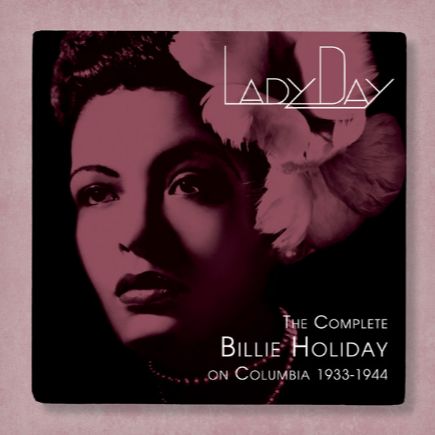Nice Work If You Can Get It: élégance swing et ironie sociale
Parmi les neuf chansons composées par George Gershwin pour le film A Damsel in Distress (Une demoiselle en détresse, 1937), Nice Work If You Can Get It, avec des paroles signées Ira Gershwin, s’impose comme l’un des grands classiques de l’époque.
Interprétée à l’origine par Fred Astaire, figure emblématique de l’âge d’or hollywoodien, la chanson s’inscrit rapidement dans le répertoire du jazz, devenant un standard à la fois raffiné et versatile. Écrite en pleine Grande Dépression, Nice Work If You Can Get It joue habilement de l’ironie. Sous ses allures légères, la chanson évoque un idéal de vie confortable et insouciante, inaccessible à la plupart des Américains de l’époque.
Pourtant, loin de sombrer dans le cynisme, elle célèbre avec charme et élégance l’aspiration au bonheur, portée par une mélodie vive et fluide au swing contagieux. Le texte d’Ira Gershwin, empreint de finesse et de second degré, oscille entre légèreté apparente et critique sociale implicite.
Billie Holiday: élégance et profondeur au cœur du swing
Le 1er novembre 1937, à New York, Billie Holiday enregistre Nice Work If You Can Get It avec l’orchestre de Teddy Wilson, offrant une interprétation qui transcende l’esprit léger de la chanson pour en révéler une intensité insoupçonnée.
Billie Holiday en propose une lecture radicalement différente: loin du glamour initial, elle introduit une mélancolie subtile qui, sans trahir la légèreté des paroles, y installe une gravité voilée. Sa diction limpide, son phrasé relâché et ses micro-retards rythmiques sculptent un swing inimitable, donnant à la chanson une profondeur émotionnelle nouvelle.
L’orchestre de Teddy Wilson joue ici un rôle décisif. Pianiste raffiné, Wilson privilégie un accompagnement fluide et élégant, créant un espace où la voix de Billie Holiday peut s’épanouir avec naturel. Autour d’eux, des solistes de premier plan comme Lester Young au saxophone ténor — dont l’entente musicale avec Holiday est devenue légendaire — apportent une réplique instrumentale subtile et complice.
Nice Work If You Can Get It: elegancia swing e ironía social
Entre las nueve canciones compuestas por George Gershwin para la película A Damsel in Distress (Una dama en apuros, 1937), Nice Work If You Can Get It, con letra de Ira Gershwin, se impone como uno de los grandes clásicos de la época.
Interpretada originalmente por Fred Astaire, figura emblemática de la era dorada de Hollywood, la canción se integró rápidamente al repertorio del jazz, convirtiéndose en un estándar refinado y versátil. Escrita en plena Gran Depresión, Nice Work If You Can Get It juega con ironía e inteligencia. Bajo su apariencia ligera, evoca el ideal de una vida cómoda y despreocupada, inalcanzable para la mayoría de los estadounidenses del momento.
Sin embargo, lejos del cinismo, celebra con elegancia y encanto el deseo de felicidad, impulsada por una melodía viva y fluida con un swing contagioso. El texto de Ira Gershwin, lleno de sutileza y doble sentido, oscila entre ligereza aparente y crítica social implícita.
Billie Holiday: elegancia y profundidad en el corazón del swing
El 1 de noviembre de 1937, en Nueva York, Billie Holiday grabó Nice Work If You Can Get It con la orquesta de Teddy Wilson, ofreciendo una interpretación que trasciende el espíritu ligero de la canción para revelar una intensidad insospechada.
Holiday propone una lectura radicalmente distinta: lejos del glamour inicial, introduce una melancolía sutil que, sin traicionar la ligereza de la letra, instala una gravedad velada. Su dicción clara, su fraseo relajado y sus micro-retardos rítmicos esculpen un swing inimitable, otorgando a la canción una nueva profundidad emocional.
La orquesta de Teddy Wilson desempeña aquí un papel decisivo. Pianista refinado, Wilson privilegia un acompañamiento fluido y elegante, creando un espacio en el que la voz de Billie Holiday puede desplegarse con naturalidad. A su alrededor, solistas de primer nivel como Lester Young al saxofón tenor —cuya compenetración musical con Holiday se volvió legendaria— aportan una réplica instrumental sutil y cómplice.
Nice Work If You Can Get It: eleganza swing e ironia sociale
Tra le nove canzoni composte da George Gershwin per il film A Damsel in Distress (Una damigella in pericolo, 1937), Nice Work If You Can Get It, con testo di Ira Gershwin, si afferma come uno dei grandi classici dell’epoca.
Interpretata inizialmente da Fred Astaire, icona dell’età d’oro di Hollywood, la canzone entra rapidamente nel repertorio jazzistico, diventando uno standard raffinato e versatile. Scritta in piena Grande Depressione, Nice Work If You Can Get It gioca abilmente con l’ironia. Dietro un’apparenza leggera, evoca l’ideale di una vita agiata e spensierata, spesso inaccessibile alla maggior parte degli americani dell’epoca.
Eppure, lontano dal cinismo, il brano celebra con charme ed eleganza l’aspirazione alla felicità, sostenuto da una melodia vivace e fluida dal swing contagioso. Il testo di Ira Gershwin, ricco di finezza e di sottintesi, oscilla tra leggerezza apparente e critica sociale implicita.
Billie Holiday: eleganza e profondità nel cuore dello swing
Il 1º novembre 1937, a New York, Billie Holiday incise Nice Work If You Can Get It con l’orchestra di Teddy Wilson, offrendo un’interpretazione che trascende lo spirito leggero del brano per rivelarne un’intensità inattesa.
Holiday ne propone una lettura radicalmente diversa: lontana dal glamour iniziale, introduce una malinconia sottile che, senza tradire la leggerezza del testo, vi innesta una gravità velata. La sua dizione limpida, il fraseggio rilassato e i micro-ritardi ritmici scolpiscono uno swing inimitabile, conferendo al brano una nuova profondità emotiva.
L’orchestra di Teddy Wilson svolge qui un ruolo decisivo. Pianista raffinato, Wilson privilegia un accompagnamento fluido ed elegante, creando uno spazio in cui la voce di Billie Holiday può fiorire con naturalezza. Attorno a loro, solisti di primo piano come Lester Young al sax tenore —la cui intesa musicale con Holiday divenne leggendaria— offrono una replica strumentale sottile e complice.
Nice Work If You Can Get It: swing elegance and social irony
Among the nine songs composed by George Gershwin for the film A Damsel in Distress (1937), Nice Work If You Can Get It, with lyrics by Ira Gershwin, stands out as one of the era’s great classics.
Originally performed by Fred Astaire, an icon of Hollywood’s golden age, the song quickly entered the jazz repertoire, becoming a refined and versatile standard. Written during the depths of the Great Depression, Nice Work If You Can Get It cleverly plays with irony. Beneath its light and breezy surface, the song evokes an ideal of comfort and carefree living that remained out of reach for most Americans of the time.
Yet far from cynical, it gracefully celebrates the pursuit of happiness, carried by a lively, fluid melody with an infectious swing. Ira Gershwin’s lyrics, full of subtlety and double meaning, balancing apparent lightness with implied social critique.
Billie Holiday: elegance and depth at the heart of swing
On November 1, 1937, in New York, Billie Holiday recorded Nice Work If You Can Get It with Teddy Wilson’s orchestra, offering an interpretation that transcends the light spirit of the song to reveal an unexpected intensity.
Holiday presents a radically different reading: far from the original glamour, she introduces a subtle melancholy that, without betraying the playfulness of the lyrics, brings a veiled gravity to the piece. Her clear diction, relaxed phrasing, and rhythmic micro-delays shape an inimitable swing, giving the song a new emotional depth.
Teddy Wilson’s orchestra plays a decisive role here. A refined pianist, Wilson favors a fluid and elegant accompaniment, creating a space where Billie Holiday’s voice can unfold with natural ease. Around them, top-tier soloists such as Lester Young on tenor saxophone —whose musical rapport with Holiday became legendary— provide a subtle and intimate instrumental response.


